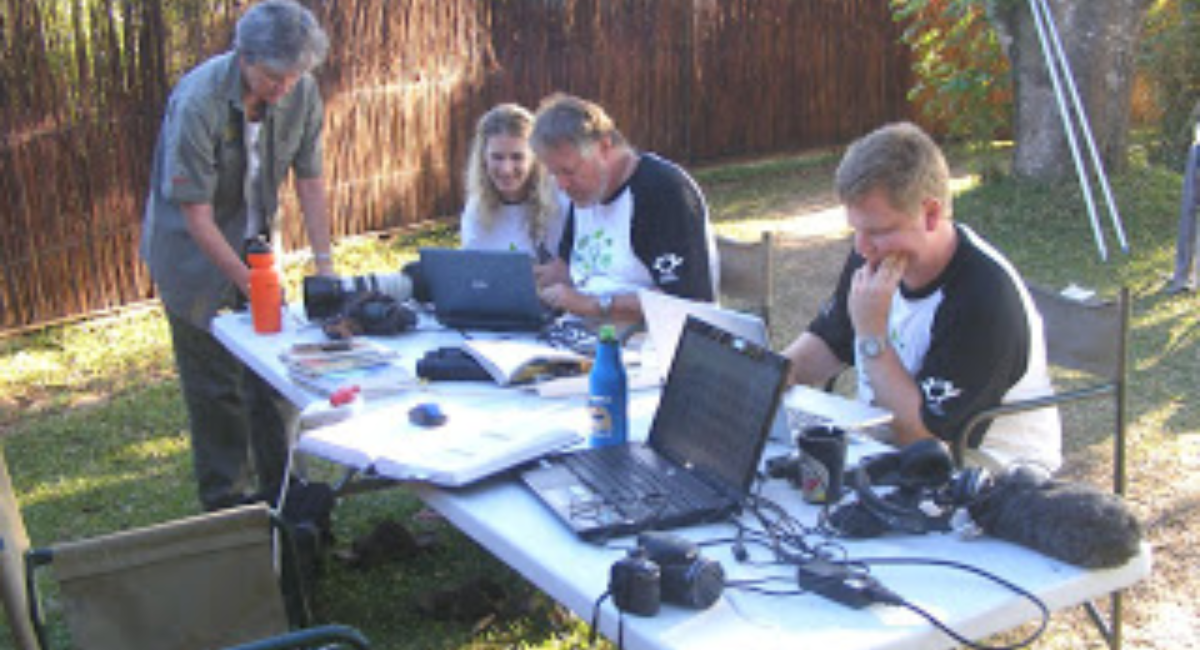The final day in the Kosi Bay area began with bustling activity at the camp as the different teams prepared for sampling. Here are the highlights of the day:
The insect experts embarked on collecting samples from the tree canopies using a method called “fogging.” Synthetic parathyroid was used, which quickly breaks down in sunlight. The fog caused by the parathyroid made the affected insects fall to the ground, where they could be collected. They focused on sampling one tree, which provides a good representation of life in the tree canopies.
The fish experts had an exciting catch of the day—a rare and elusive dark sleeper fish. They used fyke nets to capture this fish, which primarily feeds on prawns. Prof Hermann van der Bank mentioned that it was the first time in 30 years that he caught this particular fish. Due to limited knowledge about this species, it has never been barcoded before.
During the morning’s neap tide, as the water receded to its lowest levels of the month, hidden treasures were revealed. The team discovered beautiful nudibranchs while exploring. The locals also took advantage of the ideal conditions to collect red bait.
Driving down to Kosi Bay mouth, the team noticed numerous local fish traps. These traps, handed down through generations within each family, amount to approximately 300 in total. According to regulations, they must be a certain distance apart from each other to prevent overfishing. They are not allowed in the main channel of the river. These traps are designed for selective fishing, targeting only large fish, which makes it a sustainable fishing practice in the area. The team also visited the local fishing market and spotted a Mozambique Tilapia of record size.
The botanist explored the various vegetation types in the area, including sandy open grasslands with abundant bulbs, dense and humid forests with large trees and epiphytic ferns, as well as swamps around the lake accompanied by grasslands adorned with beautiful orchids.
The next morning, the camp would pack up early, eager to embark on exploring the Greater St. Lucia Wetlands Park.
